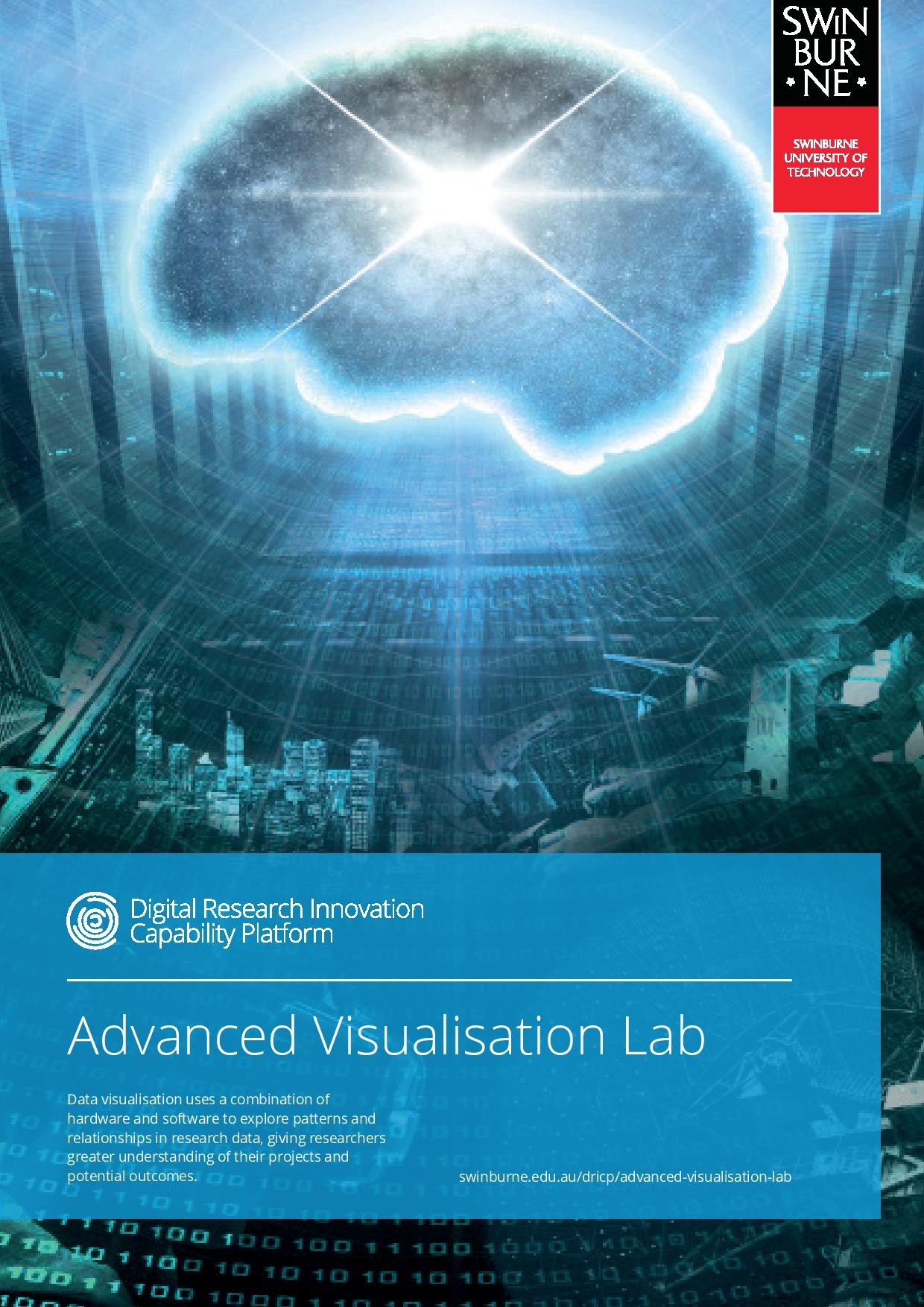
Advanced Visualisation Lab
The Advanced Visualisation Lab here at Swinburne explores new techniques and technologies to produce the most effective visualisation tools available for a wide range of research and industries.
Data visualisation uses a combination of hardware and software to explore patterns and relationships in research data, giving researchers greater understanding of their projects and potential outcomes.
It’s used at all stages of research: from conception, planning, data gathering and quality control, to analysis, presentation and publication. In this era of big data traditional approaches to visualisation are being challenged.
Key capabilities
New opportunities exist in the form of large-format two- and three-dimensional (stereoscopic) displays, tiled display walls, virtual reality headsets, and the use of cloud-based virtual desktop infrastructure.
The Advanced Visualisation Lab works with Swinburne Research Institutes and centres to:
support, enhance and extend the use of advanced visualisation
build capability in data visualisation
research, design, develop and implement new solutions, with an emphasis on accelerating the rate of discovery.
Case studies
The rapid growth in the number of active satellites orbiting the Earth provides both challenges and opportunities for real-time data analysis and decision-making. Supported by the SmartSat Cooperative Research Centre, the Advanced Visualisation Laboratory investigates novel display environments and data visualisation strategies for real-time space systems.
Projects conducted within the Advanced Visualisation Laboratory include:
ACTIVE-SDA
Tracking, classifying and modelling satellite orbits is becoming an increasingly complex task. Human operators are becoming more reliant on automation for space domain awareness (SDA). Working with industry partners – CGI and RMIT – Swinburne is developing a demonstrator to explore the use of artificial intelligence and advanced data visualisation techniques to enhance SDA and related mission systems.
3D-hyperspectral data visualisation for Earth observation
Hyperspectral detectors are becoming increasingly important in remote sensing applications for improved Earth observation. Hyperspectral cameras take images through many narrowband filters – allowing accurate classification of surface features (e.g. vegetation, minerals and soil, water bodies). The resulting data product can be treated as a three-dimensional (3D) data cube with two spatial dimensions (i.e. positions on the Earth’s surface) and one wavelength axis. Using data visualisation techniques that were developed for hyperspectral data from astronomy, the Advanced Visualisation Laboratory investigates novel display modes including large-format tiled displays (e.g. the 83-Megapixel Swinburne Discovery Wall) and virtual reality environments.
Multi-spacecraft mission simulation and visualisation
Astrodynamical simulations provide a crucial input to space mission planning and operations. Interactive visualisation of mission configurations, particularly for multi-spacecraft constellations or formation-flying scenarios, plays an important role in both understanding options and communicating outcomes to a variety of end users or audiences. Through a combination of industry consultation and desktop research, Dr Michael Afful investigated the capabilities of open source and commercial software options for mission simulation. Through an improved understanding the needs of end users, this work contributes to advancing Australia’s capabilities in mission simulation, operations and space domain awareness.
Human performance in time-critical decision making is influenced by a combination of mental workload, stress, situational awareness and expertise. Decision-making processes in high-risk, time-pressured scenarios are now regularly supported by artificial intelligence (AI); however, the integration of computational support through the inclusion of one or more AI team members needs to be approached thoughtfully.
Our transdisciplinary team brings together expertise in measuring and assessing skilled performance, human sensory and cognitive processing, human factors, data visualisation, human-computer interaction, artificial intelligence and computer vision.
This project is:
- investigating the role of an AI team member as a monitor of individual decision-making performance
- studying the characteristics of effective cyber-human teams through the integration of an AI team-member
- exploring the role of an AI team member in human-machine teams where the AI is the most valuable player (MVP).
This project is supported by the Next Generation Technologies Fund and the Defence AI Research Network (DAIRNet) and is conducted in partnership with La Trobe University.
Facilities
The Advanced Visualisation Lab has access to a range of facilities and equipment:

The Advanced Visualisation Lab
Contact the Advanced Visualisation Laboratory
For all general enquires, or to enquire about collaborating or partnering with the Advanced Visualisation Laboratory, please contact Professor Christopher Fluke on +61 3 9214 5828 or via cfluke@swinburne.edu.au.

